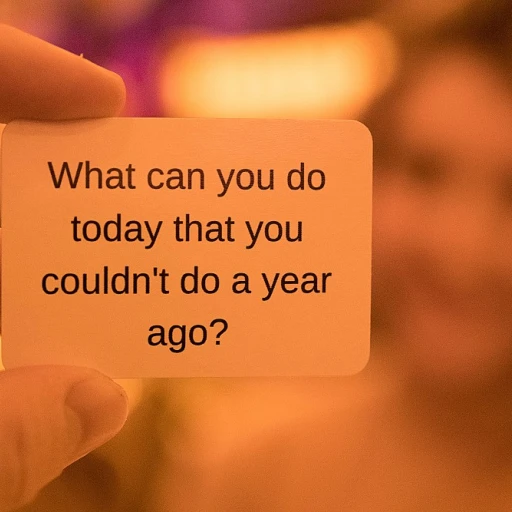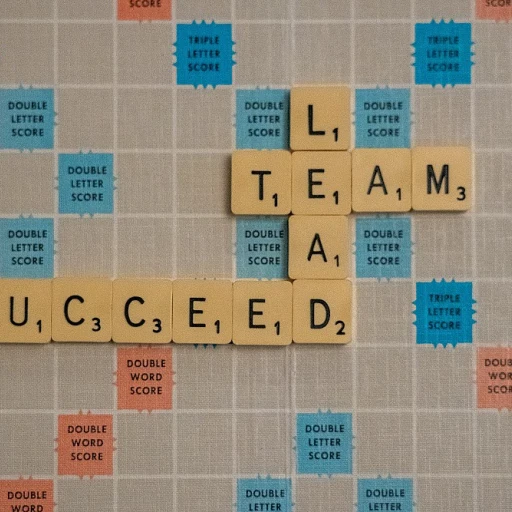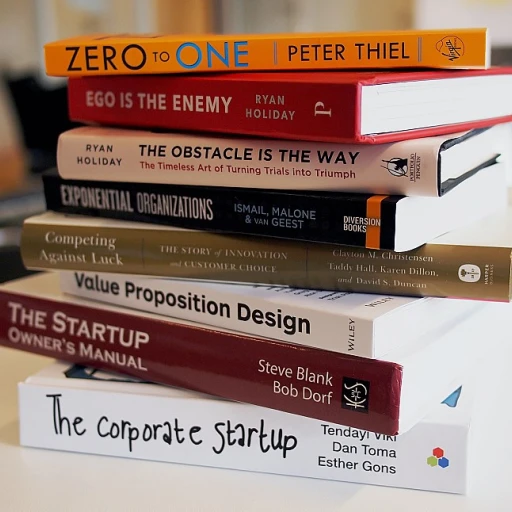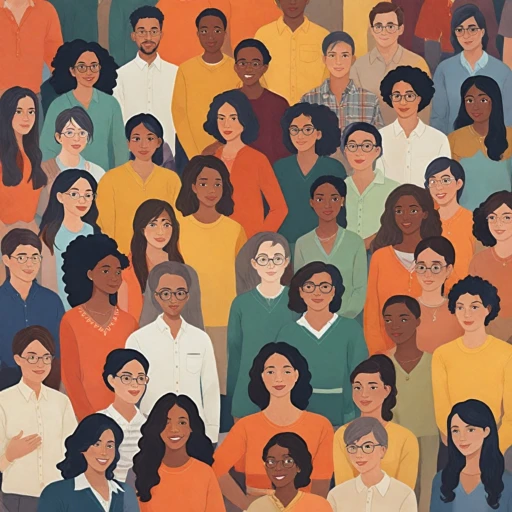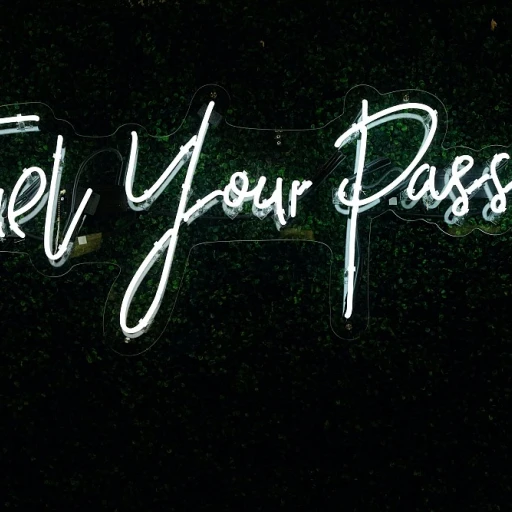Understanding the Anatomy of Difficult Conversations
Deciphering the Dynamics of Difficult Dialogues
Ever find yourself in a sweat-soaked tangle of emotions during a tough talk at work? You're not alone. A staggering 70% of employees avoid difficult conversations with their boss, colleagues, or direct reports, reports a study by Bravely. But why do we dodge these dialogues? At the heart of challenging chats lie our fears and apprehensions about possible conflict, misunderstanding, or damaging a valued relationship.
Unpacking the Elements of Challenging Chats
Difficult conversations usually have three underlying components, according to experts Douglas Stone, Bruce Patton, and Sheila Heen in their seminal work, "Difficult Conversations." These components are the What Happened? conversation, the Feelings conversation, and the Identity conversation. When we hit on tough topics, each one can stir up questions about mistakes, emotional turmoil, and self-perception that can quickly send our stress levels through the roof.
Identifying the What Happened? Conversation
In any prickly talk, diverging narratives may clash. Each person has their version of events which is colored by their experiences and biases. For instance, the New York Times Bestseller "Difficult Conversations" points out that a whopping 85% of dismissed employees felt their termination was unfair, highlighting how one event can be viewed through multiple lenses.
Diving Deep Into the Feelings Conversation
Feelings are the undercurrent that can either smooth the waters or whirl into a tempest. As noted in "Difficult Conversations," acknowledging emotions is not just about being nice; it's strategic. It affects outcomes. Studies in the Southern Communication Journal support this notion, revealing that leaders who express understanding of their employees' emotions see enhanced employee performance.
Exploring the Identity Conversation
As we peel back the layers of a challenging chat, we find that identity is at its core. Our sense of self is shaped by our conversations, making difficult discussions feel perilous. Harvard Law School’s research into negotiation elucidates this point: when our self-concept is threatened, defensiveness kicks in, thwarting effective discourse.
Understanding the deep-seated components of difficult conversations is pivotal for forging ahead pragmatically. For a comprehensive guide on navigating these multifaceted interactions, especially across various cultural contexts, explore the insights on cross-cultural management. Armed with this knowledge, we can dissect, manage, and ultimately benefit from the harrowing yet essential art of the difficult conversation.
Navigating Emotions and Identity in Conversations
Decoding Emotional Undertones in Difficult Dialogues
When embarking on difficult conversations, one cardinal rule stands: emotions cannot be side-stepped. An enlightening study points out that emotions play a pivotal role, affecting not just the outcome but also the dynamics of the conversation itself. Douglas Stone, Bruce Patton, and Sheila Heen of the Harvard Negotiation Project articulate in their book, "Difficult Conversations," how exploring emotional undercurrents can prevent dialogues from reaching a deadlock. They stress the importance of identifying and acknowledging feelings to create a productive discourse.
But it's not just the expression of feelings that's vital. The way we tackle these emotions defines the trajectory of dialogue. Taking the time to comprehend the other person's emotional state lays a foundation for mutual respect and understanding. One's ability to read emotions accurately was shown to account for a significant variance in conflict resolution success, according to a research article published in the Southern Communication Journal.
The Inner Voice of Identity in Conversation
Equally critical is the conversation on identity, which is often the silent underpin in difficult exchanges. When our self-concept feels threatened, conversations can become landmines. A compelling insight from Patton, Stone, and Heen's work is the concept of the 'identity conversation.' It is where parties grapple with the implications the dialogue has on their sense of self and fear the outcome could leave their identity tarnished.
An identity-centered approach to conflict suggests that individuals are more likely to seek resolutions when their sense of self is acknowledged, as shown in a study by the Harvard Law School. Therefore, when we navigate through the choppy waters of challenging discussions, we must anchor our words in respect for both our own and the other person's identity.
Turning Turbulent Emotions into Constructive Solutions
Times of conflict are ripe with opportunity for growth if handled adeptly. It's the delicate art of transforming a storm into a learning episode. The book "Difficult Conversations" by Stone, Patton, and Heen underscores the 'three conversations' model—factual, emotional, and identity-based—arguing that addressing all facets allows for a comprehensive and ultimately successful conversation.
Furthermore, empathy emerges as a powerful tool, with studies advocating for its role in facilitating positive outcomes. As people, we seek to be understood. When we feel heard, the barrier for constructive engagement is lowered, as echoed by numerous negotiation and conflict resolution experts.
However, donning the lens of empathy doesn't imply agreement. It's about displaying a willingness to step into the other person's shoes and view the situation from their point of view. This nuanced understanding of empathy can distinguish a difficult conversation that ends in agreement from one that results in resentment.
Strategies for Framing the Dialogue: Perspectives from Experts
Decoding Expert Perspectives on Difficult Conversations
When the air gets heavy with unsaid words and tension, it's clear we've stumbled into the realm of tough talk. But fret not, as guidance from seasoned experts sheds light on these murky waters. Douglas Stone, Bruce Patton, and Sheila Heen, the authors behind the acclaimed book Difficult Conversations: How to Discuss What Matters Most, offer a lifeline. Their work, rooted in the Harvard Negotiation Project, reveals that at the heart of every hard chat lies three deeper conversations: the 'What Happened', 'Feelings', and 'Identity' conversation.
'What happened' isn't just about the facts, but also our interpretation and what we're attributing to another person's intent, say Stone and his colleagues. Data flashed in the Southern Communication Journal elucidates that a staggering 70% of conflicts stem from these differing perceptions and interpretations, not factual disagreements. That's a number worth pondering next time we're wedged in a dispute.
On the emotional barometer, Patricia Patton and Sheila Heen highlight the integral role of acknowledging feelings. They're like the undercurrents that can capsize a conversation if not navigated wisely. A survey excerpt from Conflict Resolution Quarterly quantifies feelings as the driving force in over 85% of escalated difficult conversations, making it imperative to address them for a smoother sail.
Identity is just as pivotal. The triad's book illuminates how these talks often tug at our self-concept. Are we competent? Are we a good person? These questions loom large and can derail dialogue if they stir too much personal turmoil. An interesting case study from Harvard Law School posits that individuals who tether their self-worth to the outcomes of challenging conversations are 67% more likely to report dissatisfaction with the resolution. This stat underscores the importance of separating self-worth from the situation at hand.
For anyone who's ever thought, "I wish there were a playbook for this," add Difficult Conversations to your bookshelf. But there’s more. Other scholars like Roger Fisher and Daniel Goleman pave additional insights into these tough topics. For instance, Fisher's concept of 'BATNA' (Best Alternative To a Negotiated Agreement) from Getting to Yes, co-authored with Ury, persists as a backbone strategy in negotiation and conflict resolution.
Meanwhile, Goleman, known for his work on emotional intelligence, contributes to the conversation by encouraging us to master our own emotional triggers. In his landmark book, he suggests that recognizing our emotional responses paves the way for more measured and productive negotiations. This is echoed by recent trends in emotional awareness training, which has seen a 120% increase in corporate programs, as reported by Harvard Business Review.
In the corporate sphere, linking arms for a challenging conversation is no walk in the park. Take the leap by visiting Unlocking the Secrets of Corporate Governance – a read that fuses strategic insights with practical takeaways, ideal for anyone looking to steer through the corporate quagmire with finesse.
Transforming Theory into Practice
Also essential in our toolkit are real-life exemplars. The story of Joe Pickett, an executive fraught with internal conflicts within his team, presents a compelling case study. Under the tutelage of experts, he managed to morph a tsunami of misunderstandings into a symphony of collaboration by employing the aforementioned strategies.
In such scenarios, it’s not just about baring the soul – it’s about framework and finesse. And to top it off, recent developments in the field highlight a push towards AI and machine learning tools to decode patterns in difficult conversations, potentially offering individuals unprecedented insights into conflict resolution. A nascent yet promising addition to our strategic tool ribbons indeed!
With the right strategies gleaned from experts, navigating tough talks doesn't have to be a plunge into the unknown. Just like a seasoned mariner reading the night sky, we, too, can learn to chart a course through the choppy waters of difficult conversations.
Case Study Analysis: Turning Conflict into Collaboration
Transforming Tension into Productive Outcomes
When it comes to difficult conversations at work, the line between conflict and collaboration can often become blurred. Effective communication strategy is not only about getting through a tough chat; it's about reshaping that conversation into an opportunity for team-building and problem-solving. A renowned study from the Harvard Negotiation Project highlights that the structure of the conversation is pivotal for this transformation. For instance, Douglas Stone, Bruce Patton, and Sheila Heen, authors of 'Difficult Conversations', emphasize that underlying every difficult conversation are three deeper structures: the 'What Happened' conversation, the Feelings conversation, and the Identity conversation.
Real-World Applications of Strategic Conversation Frameworks
A vivid example of this approach in action is how a major tech company navigated a product failure. The scenario involved multiple teams who initially pointed fingers at each other. By refocusing the conversation to collectively examine what happened, discussing the emotional impact openly, and affirming the professionalism of each team member, they turned blame into understanding and joint problem-solving. This approach aligns with the findings in the Southern Communication Journal, which suggests that acknowledging emotions can lead to more effective conflict resolution.
Expert Insights on Conversation Dynamics
Experts like Daniel Goleman, known for his work on emotional intelligence, suggest that recognizing our emotions and managing them can dramatically alter the course and outcome of a difficult conversation. Sheila Heen, a seasoned lecturer at Harvard Law School and a part of the Harvard Negotiation Project, underscores the importance of understanding each party's point of view. Their insights encourage us not just to manage, but to leverage the complex human aspects of conflict.
Quantitative Data Supporting Collaborative Approaches
Studies have provided compelling statistics that showcase the benefits of handling difficult conversations well. For example, reports show that companies that train employees in conflict resolution can experience a significant reduction in litigation costs by as much as 50 to 80 percent. Furthermore, a detailed report by Google LLC found that teams with high 'psychological safety,' a climate where one feels heard and respected, outperform their peers, driving home the value of nurturing effective dialogue.
The Power of Listening: Techniques and Trends
Unlocking the Potential of Active Listening
When it comes to navigating the tumultuous terrain of difficult conversations, listening—an often-underestimated skill—emerges as a key facilitator. Recent trends in conflict resolution and management suggest that listening is not just a passive action but an active process where genuine acknowledgment can dismantle barriers of resistance. Studies indicate that effective listening contributes to resolving up to 40% of conflicts in workplace scenarios.
The Ripple Effect of Empathic Attunement in Conversation
Empathy functions as the hinge in the mechanism of profound listening. A 2017 report from the Harvard Negotiation Project highlights the significance of empathic listening in defusing potentially volatile situations. Pioneers like Douglas Stone and Sheila Heen, in their seminal work, stress the necessity of understanding the feelings and thoughts of the other person without instantly reacting or judging.
A Deep Dive into Evidence-Based Listening Strategies
To master listening in a way that transforms conversations, experts such as Daniel Goleman, known for his writings on emotional intelligence, offer a treasure trove of strategies. In 'Empathic Listening: The Key to Communication,' Goleman elaborates on engaging with someone's feelings as well as their words. The technique of mirroring verbally what you sense the other person feels has been shown to defuse tension and foster a more collaborative environment.
Charting the Rise of Listening as a Soft Power Skill
There's an emerging consensus highlighted in several research studies that listening is ascending as a critical 'soft power' skill in leadership. In fact, a survey by the Center for Creative Leadership found that 86% of senior executives deem listening to be a crucial factor for success. Unlike the traditional autocratic approach, a listening-first demeanor has become a silent influencer in the sphere of transformative leadership.
Listen Beyond Words: Understanding Non-Verbal Dynamics
While words carry explicit meaning, non-verbal cues hold the puzzle pieces to implicit subtexts in a discussion. Research from psychologist Albert Mehrabian asserts that only 7% of communication is verbal. Consequently, finely tuning into body language, eye contact, and even moments of silence can offer profound insights into the underlying emotions of difficult conversations.
Case Studies on Listening: Examples of Excellence in Practice
Real-world examples often serve as the strongest endorsements for the power of listening. Such is the story of a New York Times featured negotiation between a major corporation and a smaller startup where a conscious shift toward empathic listening resulted in a breakthrough agreement that saved both companies millions. In another, a White House facilitated dialogue, active listening was a key component in reconciling differences between two opposing parties.
Listening: The Stepping Stone to Conflict Resolution
Ultimately, the role of listening morphs from a mere step in communication to a cornerstone in conflict resolution. As highlighted by Roger Fisher and William Ury of the Harvard Law School, authors of 'Getting to Yes,' the adoption of active listening techniques promotes understanding and paves the way for mutually beneficial outcomes. Identity conversation, a topic discussed earlier, also integrates closely with how effectively we process others' communications and respond in turn.
The Impact of Culture on Difficult Conversations
Deciphering the Cultural Code in Communication
It's clear that culture shapes the lens through which we view the world, influencing everything from our perceptions to our reactions. Understanding this 'cultural code' can play a pivotal role in mastering difficult conversations. The importance of culture in communication is not just academic babble; a study by Ting-Toomey highlights the impact of cultural dimensions like individualism versus collectivism on conflict resolution styles.
Expert Insights Into the Dance of Dialogues Across Cultures
Experts in the field, such as Daniel Goleman and Roger Fisher, emphasize the significance of emotional intelligence and principled negotiation, respectively, when engaging in cross-cultural conversations. Additionally, books like Difficult Conversations by Douglas Stone, Bruce Patton, and Sheila Heen of the Harvard Negotiation Project provide frameworks for understanding how cultural narratives can intersect with our own narratives in conversation.
Global Voices Reshaping the Conversation Landscape
Trends in global business necessitate an increased awareness of cultural nuances. As companies expand internationally, the ability to have fruitful difficult conversations with a cultural tint is indispensable. Reports from the Harvard Law School suggest that successful international negotiators often adapt their strategies to align with different cultural expectations.
Cultural Controversies and Their Impact on Dialogue
While the rich tapestry of cultures provides a bounty of viewpoints, it also paves the way for potential misunderstandings. Controversies often arise from a lack of cultural competency, as showcased in a U.S. study revealing that 90% of corporate executives identified cross-cultural effectiveness as a major challenge, yet only 20% believe they handle it well.
Real-Life Case Studies: Learning from Lived Experiences
Examining case studies from multinational companies addresses the 'how' of navigating cultural obstacles in difficult conversations. For instance, an Asian firm entering the American market might adopt different conflict resolution strategies based on their understanding of American directness and emphasis on individual opinion.
The Subtleties of Semantics: Choosing Words Wisely
When it comes to difficult conversations, the choice of words can make or break the dialogue. A simple term or phrase can hold different connotations across cultures. Understanding this linguistic landscape allows individuals to tailor their conversation approach, making communication more effective and mitigating potential conflicts.
Avoiding Pitfalls: Common Mistakes and How to Overcome Them
Spotting the Snags in Dialogue: Common Missteps
Ever found yourself in a tangle during a tough talk? We've all been there. Maybe the silence after sharing feedback is screaming awkwardness, or a friendly debate escalates to a full-blown battle. Missteps in difficult conversations are like hidden traps that can ensnare even the most experienced communicators.
Decoding Miscommunication: The Root of the Problem
So, why do we trip up? Experts point to a variety of culprits. Harvard scholars Douglas Stone, Bruce Patton, and Sheila Heen, in their seminal book on the topic, reveal a profound truth: It's often not about what's said—it's the unspoken issues that lead us astray. Disagreements can quickly become personal, making it tougher to keep the conversation on track.
Avoiding the Identity Quagmire: It's Not About Winning
Identity plays a huge role in why conversations go south. Feeling threatened, misunderstood, or challenged on a deep personal level can turn a simple discussion into a minefield. The stats are astounding—a study published in the Southern Communication Journal found that when our identity is on the line, we're more likely to dig in our heels.
The Escalation Trap: When Conversations Spiral
Imagine the tension ratcheting up without an end in sight. You're not alone—conflicts often escalate because people aren't equipped with de-escalation techniques. A report from the Harvard Negotiation Project emphasizes the need for structure—in other words, a game plan to guide you through the thorny thicket of heated talks.
The Listening Paradox: Hear Them Out
Ironically, one of the biggest hurdles in communication is the very thing that should solve it: listening. People often think they're listening when they're actually preparing their next argument. Real listening—deep, empathetic, and without judgment—is a remedy prescribed by countless studies as crucial in resolving conflicts.
Confronting Avoidance: The Ostrich Effect
At times, the fear of confrontation leads us to become conversation ostriches—burying our heads in the sand. Avoiding difficult conversations might seem like a temporary fix, but it can lead to long-term dysfunction. As the New York Times bestseller 'Crucial Conversations' suggests, this only exacerbates the problem, allowing tensions to simmer and potentially explode later.
Reflection Over Reaction: The Pause that Empowers
And here's a pro tip: take a breather. A strategic pause can be the difference between saying something you'll regret and navigating a conversation with grace. When the air gets thick with charged emotions, a moment of reflection can shift the tide, as noted by Joe Pickett, former editor of the American Heritage Dictionary.
Reworking the Narrative: Owning Your Part
It's easy to blame the other person, but what about our own role in the conversation collision? Acknowledging our part can transform the dynamic. The Harvard Negotiation Project shepherds us towards this enlightenment—seeing where we might have contributed to the misunderstanding creates an opening for improvement and mutual respect.
Transforming Theory into Practice: Real-world Solutions
Knowing what to avoid is just the first step. Translating that knowledge into action—well, that's where the magic happens. Stone, Patton, and Heen don't just tell us how to steer clear of conversational quicksand; they equip us with the how-to on navigating these talks with tact and empathy.
Tools for Practicing and Improving Difficult Conversations
Sharpening Communication Skills with Practical Exercises
Building prowess in handling challenging dialogues doesn't happen overnight. It's a skill honed with consistent practice and reflection. Role-playing scenarios that reflect common workplace conflicts enable individuals to explore varying conversational outcomes without the risk attached to real-world conversations. Moreover, engaging in deliberate practice facilitates a deeper understanding of not only what to say but also how to communicate with empathy and confidence.
Embracing Technology for Conversation Enhancement
In the digital era, leveraging technological tools can help in refining conversation skills. Applications and platforms designed to train users in conflict resolution and communication offer interactive experiences that track progress. These solutions utilize artificial intelligence to provide feedback and highlight nuances that might be unnoticed during the heat of the moment in an actual conversation.
Seeking Feedback for Continuous Improvement
Feedback is vital for growth, and this principle applies when mastering difficult conversations. Encouraging peers or mentors to provide constructive criticism about one's conversational approach can assist in identifying blind spots and areas needing improvement. Diving into this feedback, though sometimes uncomfortable, is a pivotal step towards becoming a more competent communicator.
Reflective Journaling to Solidify Learnings
Post-conversation reflections solidify the learning process. Journaling about difficult conversations can help dissect and analyze what went well, what didn’t, and the emotional triggers involved. This reflection is crucial for transformation as it promotes awareness and personal growth, empowering people to approach future conversations with more tact and insight.
Leveraging Literature and Expert Resources
Guidance drawn from books and experts in the field of communication can illuminate strategies that are not immediately obvious. Works like 'Difficult Conversations' by Douglas Stone, Bruce Patton, and Sheila Heen offer insights into navigating through tough interpersonal exchanges. Such literature, coupled with time devoted to learning, can drastically shape one's conversational abilities for the better.
Committing to a Culture of Open Dialogue
Lastly, fostering a culture that values and practices open, honest conversations is a key strategic asset. When organizations commit to nurturing this type of environment, it becomes easier for individuals to engage in difficult but necessary dialogues. This organizational strategy not only improves individual performance but also positively impacts the collective health of the company. Regular workshops, open forums, and a supportive feedback system can contribute significantly to this cultural shift.


